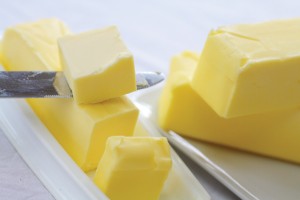We all love a hearty stew on a cold fall day. Or a chicken pot pie with homemade mashed potatoes. Or chili and cornbread. Let’s face it, there are too many comfort foods that we like to eat during fall and winter.
Unfortunately, many comfort foods contain high amounts of fat, sugar, sodium and thus, more calories. Here’s the scoop on substituting certain ingredients in your comfort food recipes:
For less sugar:

Another way to reduce sugar in a recipe is by replacing the amount of sugar called for in a recipe with sucralose. For each cup of sucralose, add ½ teaspoon baking soda. Keep in mind that yields will be smaller and baking times will be shorter when sucralose is used.
Syrup: Use sugar-free syrup or pureed fruit that doesn’t contain added sugars.
Canned and frozen fruits: Look for unsweetened frozen fruit, or fruit canned in water, light syrup or its own juices.
For less sodium:
Salt: Either cut the amount of salt called for in a recipe in half or don’t include it at all.
If you’re using frozen or canned vegetables, pay attention to the packaging. Use frozen vegetables that don’t have sauces and canned vegetables that have no salt added.
When it comes to seasonings, only use them if they don’t contain salt. You can use herbs, spices, lemon juice or vinegar in place of seasonings. Purchase low-sodium options for ketchup, chili sauce, barbecue sauce and other seasonings.
 For less fat and less calories:
For less fat and less calories:
Shortening, butter or oil: Half of the shortening, butter or margarine can be replaced with applesauce or prune puree. Keep in mind that baking time may need to be cut by 25 percent.
Eggs: Use 2 egg whites for each egg in a recipe. Or, use ¼ cup egg substitute per egg.
Cream: Evaporated skim milk can be used in place of cream.
Whipping cream: Nonfat whipped topping, used in accordance with the recommended 
Whole milk, half-and-half and evaporated milk: Use skim milk, 1% milk, evaporated skim milk, fat-free half-and-half or plain soy milk with calcium.
Mayonnaise: Low-fat, reduced-fat or fat-free is better than regular mayonnaise. Same goes for salad dressings.
Sour cream: Replace with non-fat or reduced-fat sour cream.
Cheese: Use reduced-fat cheese instead of whole fat cheese. Add reduced-fat cheese at the end of baking time. Or, you can use part-skim mozzarella cheese in recipes.
Butter, margarine, shortening and solid fat: Use ¼ less than recipe calls for. For melted butter, margarine or shortening, use equal amounts of oil.
Meats: For ground beef, use extra lean. For ground meat, use lean cuts and remove skins before cooking. For canned fish, use water-packed or vacuum-sealed cans. Instead of bacon, use Canadian bacon or lean ham. For lunch meats, use turkey sausage or low-fat meats.
For frying in fat: Opt for healthier cooking options, such as baking, boiling, broiling, grilling, poaching, roasting, stir-frying or even microwaving. If you must fry, use water, broth, cooking spray or use a nonstick pan.
Sources: Clemson University Extension, Ohio State University Extension
Get more Great Recipes in your inbox each week by getting
Around the Table.
It's a FREE weekly e-newsletter all about food. Sign Up Today!







 For less fat and less calories:
For less fat and less calories:









